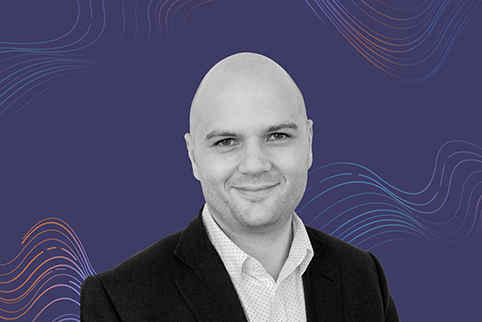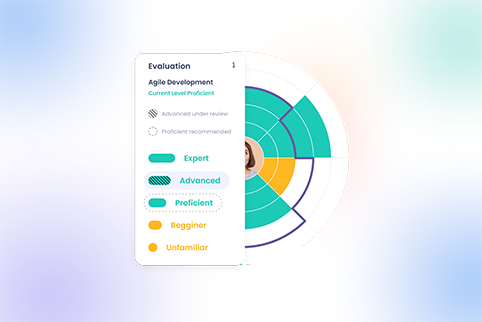Aligning Skills to Each Step of Performance Management to Drive Better Results
7 min read

Aligning skills to each step of the performance management processes like goal setting, performance reviews, 360 feedback, and on-the-job evaluation has multiple benefits, among which are higher performance and invaluable insights for future people development. In our opinion, these two outcomes are interrelated and mutually influence each other.
Increasing performance and people’s capabilities simultaneously were hard-to-reach objectives in the traditional performance models, which focused mainly on the past achievements of the employees. When an action is complete, like a performance cycle, it’s difficult to course-correct it in a timely manner, and meanwhile, the actions resulting may become obsolete. Not to mention the people’s development and performance which must be an ongoing process.
Relating to performance, a global executive research study conducted by MIT Sloan offers clear evidence that the future of performance management is more data-driven, more flexible, more continuous, and more development-oriented. It’s focused not just on individual employees, but on skills and teams.
With the proliferation of digital tools designed to uplift performance, leading companies are using PM to measurably improve performance, develop skills, and retain valued employees
— MIT Sloan
Linking skills to all performance processes only comes to reinforce this study’s conclusion that performance management should be more data-driven, more continuous, and more development-oriented. The main reason for this is to support proactively and closely people’s performance as it happens, not when it’s done, to surface in-the-moment actionable insights, and to encourage development as a way to achieve better results. This is now possible by gathering data from multiple interactions such as goals, feedback, assessments, and performance reviews all having a common touchpoint: skills.
As a result, the continuous performance management models that focus on the present and future potential of the employees to reach goals are already adopted by organizations worldwide.
How does enabling skills into a continuous performance management system work?
One step at a time. First, let’s go quickly through the steps of a continuous performance management model, and then we’ll guide you on how to enable the power of skills to drive better outcomes.
As the name points out, continuous performance management is the process that takes place throughout the year on an ongoing basis and includes:
- Starting off the process -> Setting objectives for each role type -> together with the capabilities, skills, and proficiency levels needed for that role to achieve the objectives
- Throughout the process -> Monitoring and guiding the employee to reach their goals through continuous feedback, coaching, effective one-to-one meetings -> skills output
- End of the process -> Performance reviews and recognition -> embedded with data-driven insights to make recommendations on development paths to improve skills to drive higher performance
Now, let’s walk you through each step mentioned above.
Set objectives for each role type, and the capabilities, skills, and proficiency levels needed for that role to achieve the objectives
This process involves two-sided actions. On one hand, employees and managers set goals based on the OKRs goal setting process aligned to company and department objectives and manager goals.
On the other hand, in platforms like Nestor, you can add skills, certifications, and proficiency levels associated with the capabilities necessary to perform each type of role. The next thing to do is to perform skills assessments to identify possible gaps by comparing the individual skills level of an employee against a job profile.
These actions were traditionally seen as two separate processes. Building instead a bridge between skills – job roles – objectives means creating a mechanism to understand the held skill & experiences among our own contributors.
Harnessing the power of data combined allows us to track progress on the key initiatives and tasks measured but also to find ways to enable our employees’ growth in the particular direction our organization needs most. Not only to achieve the current goals but to look in perspective and meet future needs also.
Moreover, looking at skills related to job roles and performance simultaneously and in an ongoing way is part of creating an agile work environment where you make constant interactions, use data to drive conclusions, and adjust fast to deliver better results.
Assess the goals and skills of each employee through continuous feedback and effective one-to-one meetings
360 feedback and meaningful 1:1s are effective ways to engage and support your employees’ performance and get a good sense of how they are performing compared to the expectations of the job. It can also set the stage to better understand your people’s achievements up to date, challenges and skills through multiple perspectives: peers or even your direct report’s self-assessment.
Meaningful and constant interactions between managers and employees in the flow of work are crucial to understand behaviors that can be further translated into skills that need to transform, evolve or grow to meet the business objectives.
Performance reviews embedded with data-driven insights to make recommendations on skills development
At the end of each performance cycle, the role of the annual or quarterly review process comes in. It is the step in which you can discuss the actual plan, and evaluate achievements and gaps – making the process extremely transparent and objective. Often these reviews set goals for employees to work towards achieving better performance or taking the next step in their role.
Employee development programs help employees achieve these goals by improving their knowledge in a specific subject or their ability in a specific skill. You can then measure performance across key skills and competencies and track progress.
For example, an employee – Anna from the sales department – scores low for the Presentation skills (Beginner level) in the Skills assessment run at the beginning of the year. Still, Presentation skills are crucial skills that sales team members need to possess at a Proficient level to close deals and reach goals.
Following the skills assessment, Anna becomes aware of her weak point and constantly works to improve this type of skill throughout the year. She succeeds to score higher in the performance review with her manager, acquiring the Advanced level.
Although she’s not yet at the required level of Proficient, she’s clearly made a progress so she has the potential to achieve it with some extra effort and maybe additional learning opportunities. Unlike the initial skills assessments that determined Ana’s skills level against her role, the role of the performance review is to evaluate your employees for their development and not just based on initial skills, objectives, or targets.
Skills embedded in performance reviews are a great way to track employees’ development and determine personalized learning and development goals related to both job requirements and performance goals.
Discuss development outcomes during informal 1:1 meetings
Once people begin to complete their development objectives, it’s important to hold informal 1:1s with managers to discuss what has been learned, what skills have been gained, and what additional actions are required.
Sharing development and learning outcomes during these meetings helps employees identify what areas may be lacking and require further training or additional learning. These insights become useful for future teams and provide a set of followable best practices that align with the business goals.
Hope we got your attention. If you’re looking for help to get started with skills embedded in your continuous performance management system, we’re always here to help.







